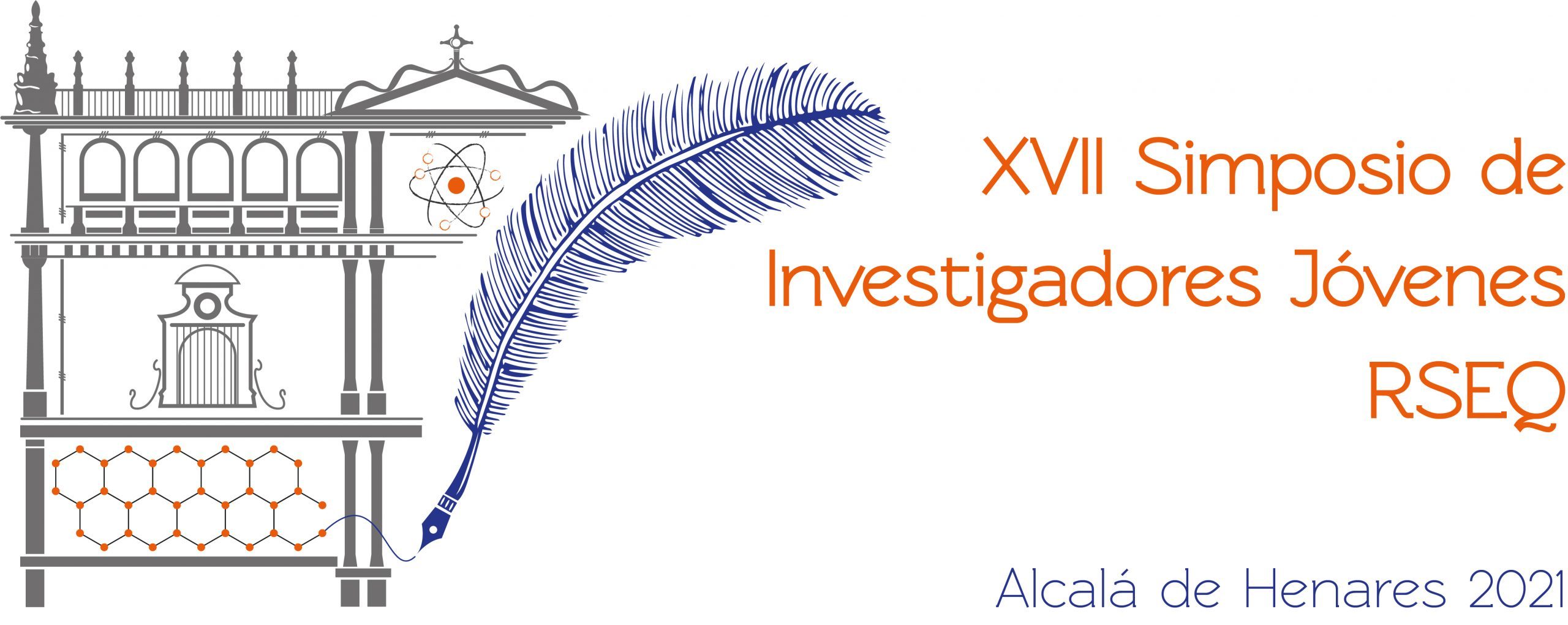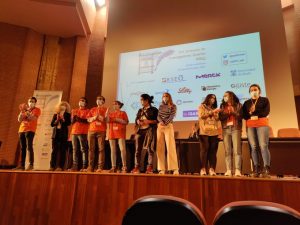Prof. Álvaro Somoza talk
Prof. Álvaro Somoza, IMDEA Nanociencia Institute
Smart Nanomedicines Against Cancer
Sala de Grados, Edificio de Farmacia, UAH. December 3d, 12.00.

Several members of the group have been in charge of organising the 17th RSEQ Young Researchers Symposium, held in Alcalá de Henares from 23 to 26 November.
The group has also made several contributions:
– Oral:
· Synthesis of seven- and eight-membered rings by Brønsted acid-catalyzed cyclization of biphenyl embedded trienynes
Jaime Tostado Sánchez, Juan J. Vaquero, Manuel A. Fernández-Rodríguez
– Flash:
· Enantio- and diastereoselective cyclopropanation of trans-alkenylboronates: Synthesis of versatile (trifluoromethyl)cyclopropylboronates
Julia Altarejos, David Sucunza, Juan José Vaquero, Javier Carreras
– Poster:
· Synthesis of a series of novel bicyclic amino acids
Álvaro González, Francisco José Torrero, José Luis Aceña, Juan José Vaquero
· Metal-free straightforward synthesis of boron-functionalized indenes and fulvenes by borylative cyclization
Ester Sans Panadés, Patricia García-García, Juan J. Vaquero, Cintia Virumbrales, Roberto Sanz, Manuel A. Fernández-Rodríguez
· SYNTHESIS OF PEPTIDE NUCLEIC ACIDS (PNAs) FOR THE TREATMENT OF CHRONIC KIDNEY DISEASE
Francisco Maqueda Zelaya, Verónica Miguel, José Luis Aceña, Santiago Lamas, Juan José Vaquero
· Synthesis of 4-membered rings fused lactams by gold(I) catalyzed
cyclization of alkynylcyclobutanamides
Guillermo G. Otárola, María Soledad Garre, Estíbaliz Merino, David Sucunza, Juan J. Vaquero, Patricia García-García
· Regioselective Ir-Catalyzed C−H Borylation of 4a,8a-Dihydro-4a-Aza-8a-Boranaphthalene
Isabel Valencia, Patricia García, David Sucunza, Juan J. Vaquero
· DEVELOPMENT OF A SYNTHETIC ROUTE TO LAETEVIRENOL A
Lucía Sánchez-Jiménez, Ana Milián, Jaime Tostado, Juan J. Vaquero, Patricia García-García, Manuel A. Fernández-Rodríguez
· Kinetic resolution in transannular Morita-Baylis-Hillman reaction:
approach to the synthesis of guaiane-type sesquiterpenes
Rubén Manzano, Raquel Mato, Efraím Reyes, Liher Prieto, Uxue Uria, Luisa Carrillo, Jose L. Vicario
· Electrochemical synthesis of aryl iodides from arylhydrazines
Clara Mañas Hernández, Guillermo Otárola, Estíbaliz Merino, Noemi Salardón, Belén Batanero

1,10a-Dihydro-1-aza-10a-boraphenanthrene and 6a,7-Dihydro-7-aza-6a-boratetraphene: Two New Fluorescent BN-PAHs.
1. Departamento de Química Orgánica y Química Inorgánica, Instituto de Investigación Química "Andrés M. del Río" (IQAR), Universidad de Alcalá, IRYCIS, Campus Científico-Tecnológico, 28805 Alcalá de Henares, Spain. 2. Departamento de Química Analítica, Química Física e Ingeniería Química, Instituto de Investigación Química "Andrés M. del Río" (IQAR), Universidad de Alcalá, Campus Científico-Tecnológico, 28805 Alcalá de Henares, Spain.
Abstract
Previously unknown 1,10a-dihydro-1-aza-10a-boraphenanthrene and 6a,7-dihydro-7-aza-6a-boratetraphene have been efficiently synthesized. Bromination of these BN-PAHs proceeds with complete regioselectivity, resulting in the formation of different substituted derivatives via cross-coupling reactions. These compounds exhibit rather high fluorescence quantum yields (up to ϕ(F) = 0.80).
Isabel Valencia, Patricia García-García, David Sucunza*, Francisco Mendicuti, Juan J. Vaquero*
J. Org. Chem. 2021, 86, 23, 16259–16267
DOI: 10.1021/acs.joc.1c01095
| Previously unknown 1,10a-dihydro-1-aza-10a-boraphenanthrene and 6a,7-dihydro-7-aza-6a-boratetraphene have been efficiently synthesized. Bromination of these BN-PAHs proceeds with complete regioselectivity, resulting in the formation of different substituted derivatives via cross-coupling reactions. These compounds exhibit rather high fluorescence quantum yields (up to ϕF = 0.80). |
Héctor de Lucio, Javier García-Marín, Patricia Sánchez-Alonso, Juan Carlos García-Soriano, Miguel Ángel Toro, Juan J Vaquero, Federico Gago, Ramón Alajarín, Antonio Jiménez-Ruiz
Eur. J. Med. Chem. , 2021
DOI: 10.1016/j.ejmech.2021.113915
| Fifteen pyridazino-pyrrolo-quinoxalinium salts were synthesized and tested for their antiprotozoal activity against Leishmania infantum amastigotes. Eleven of them turned out to be leishmanicidal, with EC(50) values in the nanomolar range, and displayed low toxicity against the human THP-1 cell line. Selectivity indices for these compounds range from 10 to more than 1000. Compounds 3b and 3f behave as potent inhibitors of the oxidoreductase activity of the essential enzyme trypanothione disulfide reductase (TryR). Interestingly, binding of 3f is not affected by high trypanothione concentrations, as revealed by the noncompetitive pattern of inhibition observed when tested in the presence of increasing concentrations of this substrate. Furthermore, when analyzed at varying NADPH concentrations, the characteristic pattern of hyperbolic uncompetitive inhibition supports the view that binding of NADPH to TryR is a prerequisite for inhibitor-protein association. Similar to other TryR uncompetitive inhibitors for NADPH, 3f is responsible for TryR-dependent reduction of cytochrome c in a reaction that is typically inhibited by superoxide dismutase. |
Inês F. A. Mariz, Sandra N. Pinto, Ana M. Santiago, José M. G. Martinho, Javier Recio, Juan J. Vaquero, Ana M. Cuadro,* Ermelinda Maçôas*
Commun Chem 2021, 4, 142
DOI: 10.1038/s42004-021-00581-4
| Mitochondria metabolism is an emergent target for the development of novel anticancer agents. It is amply recognized that strategies that allow for modulation of mitochondrial function in specific cell populations need to be developed for the therapeutic potential of mitochondria-targeting agents to become a reality in the clinic. In this work, we report dipolar and quadrupolar quinolizinium and benzimidazolium cations that show mitochondria targeting ability and localized light-induced mitochondria damage in live animal cells. Some of the dyes induce a very efficient disruption of mitochondrial potential and subsequent cell death under two-photon excitation in the Near-infrared (NIR) opening up possible applications of azonia/azolium aromatic heterocycles as precision photosensitizers. The dipolar compounds could be excited in the NIR due to a high two-photon brightness while exhibiting emission in the red part of the visible spectra (600–700 nm). Interaction with the mitochondria leads to an unexpected blue-shift of the emission of the far-red emitting compounds, which we assign to emission from the locally excited state. Interaction and possibly aggregation at the mitochondria prevents access to the intramolecular charge transfer state responsible for far-red emission. |

Two-photon activated precision molecular photosensitizer targeting mitochondria.
Resumen
Mitochondria metabolism is an emergent target for the development of novel anticancer agents. It is amply recognized that strategies that allow for modulation of mitochondrial function in specific cell populations need to be developed for the therapeutic potential of mitochondria-targeting agents to become a reality in the clinic. In this work, we report dipolar and quadrupolar quinolizinium and benzimidazolium cations that show mitochondria targeting ability and localized light-induced mitochondria damage in live animal cells. Some of the dyes induce a very efficient disruption of mitochondrial potential and subsequent cell death under two-photon excitation in the Near-infrared (NIR) opening up possible applications of azonia/azolium aromatic heterocycles as precision photosensitizers. The dipolar compounds could be excited in the NIR due to a high two-photon brightness while exhibiting emission in the red part of the visible spectra (600–700 nm). Interaction with the mitochondria leads to an unexpected blue-shift of the emission of the far-red emitting compounds, which we assign to emission from the locally excited state. Interaction and possibly aggregation at the mitochondria prevents access to the intramolecular charge transfer state responsible for far-red emission.

RSEQ Symposium 2021, September 27-30th:
– Oral:
· Enantioselective synthesis of 2,3-substituted cyclopropylboronates
Julia Altarejos, David Sucunza, Juan J. Vaquero, Javier Carreras
– Póster:
· Visible light-mediated enantioselective aminoarylation of alkenes: streamlined access to ?,?-diarylethylamines
Estíbaliz Merino, Cedric Hervieu, Mariia Kirillova,Yawen Hu, Cristina Nevado
· Metal-Free Temperature-controlled Regiodivergent Borylative Cyclization of enynes: a Boron-migration Promoted Skeletal Rearrangement
Ana Milián, Manuel A. Fernández-Rodriguez, Patricia García-García, Estíbaliz Merino, Juan J. Vaquero
· Functionalization of 4a,8a-Dihydro-4a-Aza-8a-Boranaphthalene via Regioselective Iridium-Catalyzed C−H Borylation
Patricia García-García, David Sucunza, Juan J. Vaquero, Isabel Valencia